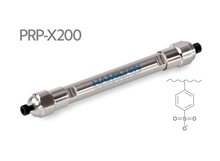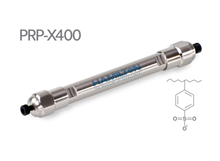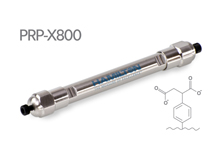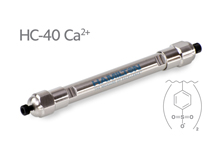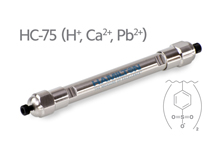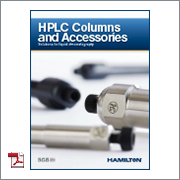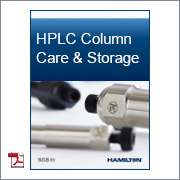- Agilent Technologies
- Alltech
- AppliChrom
- Avantor (ACE, HiChrom, Ultrasphere)
- Benson Polymeric
- BGB Analytik
- Bischoff Chromatography (ProntoSIL, HIPAK, Enviro, PolyEncap)
- Chiral Technologies (Daicel)
- ChromaNik
- Concise Separations
- Dikma Technologies
- Eurospher
- Exsil (Exmere)
- Fortis Technologies
- GL Sciences
- GRACE
- GROM
- HALO (AMT)
- Hamilton
- HELIX Chromatography
- Jones Chromatography
- Kromasil
- L-column (CERI)
- LiChrosorb
- LiChrospher
- Nacalai Tesque (COSMOSIL, COSMOSCORE, COSMOGEL)
- Nova-Pak
- Ohio Valley
- Optimize Technologies
- Osaka Soda (Shiseido)
- Princeton Chromatography
- REGIS Technologies
- Restek
- Sepax Technologies
- Shine Ion Chromatography
- Shodex (Showa Denko)
- SIELC Technologies
- Spherisorb
- Sumichiral
- Sumipax
- Superspher
- Thermo Scientific
- Trajan (SGE)
- UCT (Selectra)
- VDS optilab
- Vydac
- Welch
- ZirChrom
Hamilton Cation Exchange Columns

In Cation Exchange Chromatography, the stationary bed has an ionically negative (-) charged surface while the sample ions are of positive (+) charge. This technique is used almost exclusively with ionic or ionizable samples. The stronger the positive (+) charge on the sample, the stronger it will be attracted to the negative charge on the stationary phase, and thus the longer it will take to elute. The mobile phase is an aqueous buffer, where both pH and ionic strength are used to control elution time. Ion chromatography can employ harsh conditions requiring mobile phases that are at very high pH limits (> 11). Temperatures well above the normal operating conditions where silica materials fail can also be used.
Hamilton offers five polymeric packing materials for Cation Exchange Separations.
